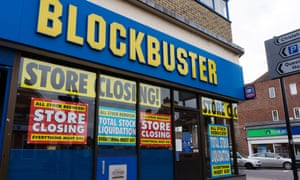And while it’s hard to cheer on a company like Blockbuster, which acted as if the market it found would remain uniform forever, it’s also strange to look at companies such as Uber and cheer them on in thinking that eventually government regulation will need to adjust to support their business models. For the ultimate upshot of the disruptor’s super-historical impulse is the expectation that, rather than your idea conforming to the world in some manner, the world ought to accommodate the sheer genius of your idea.
This idea made its way from the Communist Manifesto into business jargon by way of the economist Joseph Schumpeter, who, in a 1942 book, coined the phrase “creative destruction”. Although hardly a communist himself, Schumpeter derived the term from Marx and intended it to be descriptive rather than affirmative. Born in Austria in 1883, Schumpeter was steeped in both Marxian economics and in the work of classical liberal economists such as Ludwig von Mises. He became one of the great analysts of the business cycle, but also of its social ramifications. In 1932, he became a professor at Harvard. Schumpeter thought that capitalism would almost gradually lead to some kind of state socialism, a fact that he didn’t exactly welcome but thought inevitable.
Hutzler 571 banana slicer, which mock exactly the mania for buzzy solutions in search of a problem – “No more paying for those expensively sliced fruits- i can just stay at home,” joked one user.
Audio and video cassettes and floppy discs. Photograph: Prostock-Studio/Getty Images/iStockphoto
There are certain phrases that are central to the sway the tech industry holds over our collective imagination: they do not simply reflect our experience, they frame how we experience it in the first place. They sweep aside certain parts of the status quo, and leave other parts mysteriously untouched. They implicitly cast you as a stick-in-the-mud if you ask how much revolution someone is capable of when that person represents billions in venture capital investment. Among the most influential of these phrases is undoubtedly “disruption”.
But there is a less obvious shift in usage. Schumpeter proposed creative destruction as a concept that applies to the business cycle. Companies dominate the market, are challenged by other companies and get displaced. But today’s rhetoric of disruption frequently applies to things other than companies. This is why people such as Peter Thiel are so intent on claiming that higher education, say, or healthcare as a whole, or government, are oligopolies or even monopolies. Schumpeter would have looked at Blockbuster’s gradual defeat by Netflix – a rival it never saw coming, a rival it didn’t take seriously when threatened and even refused to buy when given the chance – as a textbook case of creative destruction. But is the same true for your local travel agency, record shop and pharmacist? Is it true of the postal service or the regional bus company? Disruption is a concept that draws combatants into an arena they had no sense they were entering.

Friedrich Nietzsche once wrote that “forgetfulness is a property of all action”. If I could clearly see what everyone had done before me and what the consequences were, I would never act. To act decisively, Nietzsche proposed, requires a moment of egocentrism, “drawing a limited horizon round one’s self”, the power to be “super-historical”. Disruption is premised on creative amnesia, on a productive or at least profitable disregard for details. Sometimes what comes out at the other end is a Tesla Model 3. Sometimes it’s a Hutzler 571 banana slicer. The way the concept is used today is deeply suspicious of any cumulative, gradual force of progress. This despite the fact that while stories of gradual progress aren’t as exciting as stories of people just flipping the game board, they often end up describing the world we live in fairly well.
The most obvious shift that has occurred in the use of the term “creative destruction” is that it now has an exculpatory, at times even celebratory, side. Schumpeter wasn’t altogether horrified by creative destruction, but he thought it was as much of a problem as it was a functional rule for how capitalism operates. By the 90s, “creative destruction” had become an exonerating byword, usually when someone wanted to push back against government regulation or public opprobrium for certain business practices. Evangelists of downsizing and hostile takeovers, such as business professors Richard Nolan and David Croson, relied on the term.
The final distortion the rhetoric of disruption introduces concerns where society and the state lend their support. For Schumpeter, creative destruction issued from challengers who were able to spontaneously expand or change the playing field. But what happens when disruption becomes itself institutionalised? Today’s plucky rebels are funded by billionaires, can go into massive debt if they need to, are supported by regulatory bodies they or their business school buddies have long ago captured and are cheered on in their attacks by people who have been wanting to get rid of unions and regulation all along. They are hardly what we’d usually think of as outsiders.
A Blockbuster store in Sidcup, Kent, 2013. Photograph: UrbanImages/Alamy Stock Photo
Marx thought that the falling rate of profit doomed capitalism to exploit labour ever more harshly (thus setting the stage for revolution). Schumpeter countered with the idea of creative destruction: if markets were uniform over time, Marx might well have been proven correct, but this turns out not to be the case. “The fundamental impulse that sets and keeps the capitalist engine in motion comes from the new consumers’ goods, the new methods of production or transportation, the new markets, the new forms of industrial organisation that capitalist enterprise creates,” wrote Schumpeter. In his view, capitalism’s “creative destruction” – its tendency to shake up and redefine its markets – is the thing that actually accounts for its continuity. Yesterday’s monopolist is suddenly one competitor among many, and, often enough goes under entirely. The cycle begins anew.

While “creative destruction” is a deeply ambivalent phrase, the word “disruption” is frequently positioned as something to be explicitly celebrated. It becomes something to be taught and striven for. And where Schumpeter’s view of the business cycle presumes a kind of Olympian view from above, disruption puts us in the trenches, and presumptively on the side of the attacker rather than the stalwart. While creative destruction was neutral on whether whatever was getting creatively destroyed deserved it, anything that is getting “disrupted” had it coming.
• Adapted from What Tech Calls Thinking: An Inquiry into the Intellectual Bedrock of Silicon Valley, which will be published by FSG Originals x Logic on 13 October
Most of the discourse around disruption clearly draws on the idea of creative destruction, but it shifts it in important respects. It doesn’t seem to suggest that ever-intensifying creative destruction will eventually lead to a new stability – that hyper-capitalism almost inevitably pushes us toward something beyond capitalism. Instead, disruption seems to suggest that the instability that comes with capitalism is all there is and can be – we might as well strap in for the ride. Ultimately, then, disruption is newness for people who are scared of genuine newness. Revolution for people who don’t stand to gain anything by revolution.
Silicon Valley mantra as well: do you want to “fail better”, do you want to “fail fast”? Well, whether you get to, and how your failure gets interpreted, depends a great deal on who you are.
When Elizabeth Holmes appeared on the talkshow Mad Money after the allegations against Theranos became public, she repeated a Steve Jobs-ism (an infamous free-floating quote, variants of which have been ascribed to everyone from Mahatma Gandhi to Arthur Schopenhauer): “First they call you crazy, then they fight you, then you change the world.” When challenged, Holmes retreated into a kind of received wisdom, but that wisdom seems to have been largely gleaned from dorm room motivational prints. Even so, there’s a lot going on in that sentence.
It would have been easy enough for Schumpeter to argue that in this way, creative destruction would ensure capitalism’s long-term viability. But interestingly enough, in his magnum opus, Capitalism, Socialism and Democracy, he argues just the opposite. The second part of the book is titled Can Capitalism Survive?, and Schumpeter comes down on the side of no. After all, the constant destruction, however generative it may be from a bird’s eye view, will ultimately call forth attempts to regulate capitalism. While creative destruction is viable economically, its experience is too disorienting politically to allow capitalism to survive long-term. In the end, Schumpeter believed, creative destruction makes capitalism unsustainable: gradually and peacefully (through elections and legislative action), capitalism will yield to some form of socialism.



